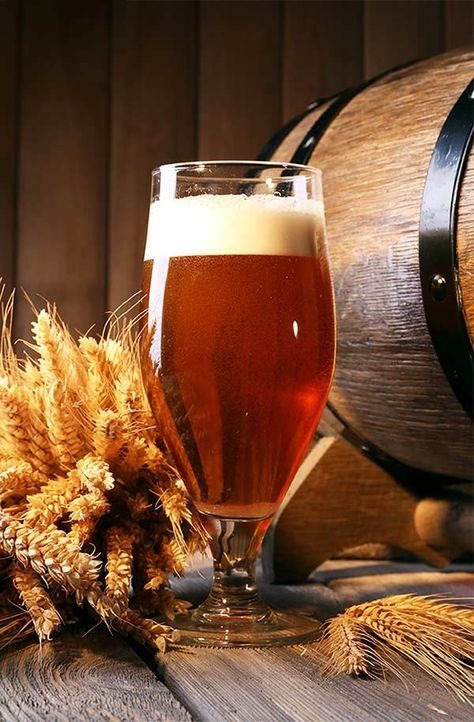If you’re a craft beer enthusiast who enjoys unique, funky brews beyond the hop-forward India Pale Ales or the malt-heavy porters and stouts, you’ve probably encountered sahti—or at least heard of it.
Sahti, a traditional farmhouse ale, is unique to Finland and one of the world’s oldest beers, with evidence of its existence aboard a sunken Viking ship dating back to the 9th century.
Traditionally flavored with juniper instead of or alongside hops, sahti is brewed in a special vessel called a kuurna, an ancient lauter tun made from hollowed-out wooden logs that separates the wort from the mash solids.
Sahti fell out of favor in the early 1900s, with Prohibition causing the closure of many small, family-run sahti breweries in Finland. As commercially produced lagers became the popular style, sahti nearly faded from view. However, in the late 1970s, Finnish homebrewers revived the centuries-old ale.
Regarded as one of Finland’s most traditional recipes, sahti is protected under a designation of origin (PDO), similar to France’s Camembert cheese and Italy’s Parma ham. The finest sahti can be found in Finland’s countryside, particularly in the southern and western regions, where farmers still brew it for personal consumption.
The best-known commercial producer of sahti in Finland is Lammin Sahti. Owner Pekka Kääriäinen brews around 25,000 liters of sahti annually in his family farmhouse, where he made his first batch at age 14. Other brewers, like Finlandia Sahti, offer fruitier variations, while Pyynikin Craft Brewery creates more hoppy versions. Sahti is traditionally made with grains, water, baker's yeast, juniper branches, and sometimes hops.
According to Kääriäinen, sahti can be a divisive flavor. “You either love it or you don’t,” he says. “Most people don’t because they’ve had bad experiences with poorly made sahti. Those who love it grew up with it and are used to the flavor.”
The Distinct Flavor of Sahti
Sahti stands apart from commercial beers in that it has little-to-no carbonation. “Unlike modern beers, sahti is flat, with no bubbles, giving it a smooth, refreshing taste,” says Marjokaisa Piironen, a sahti brewer. She also explains that her brewing style is clean, allowing fermentation to happen naturally over two weeks.
Typically ranging from 6-8% ABV, sahti is known for its strong banana aroma, which Piironen describes as intentional. “It’s a sweet, dark ale with a banana-like aroma that, in most beers, would be an error—but in sahti, it belongs,” she explains. The fruity aroma is the result of baker's yeast, rather than commercial yeast, used in mainstream beers.
Sahti is also known for its lack of bitterness. “Sahti wort is not boiled, just heated to around 80-85°C (176°F),” says Piironen. “With minimal hops used, there’s no bitterness. Fresh juniper branches give sahti its distinctive pungency.”
How to Try Sahti
Sahti’s major hurdle to global distribution is its short shelf life. Due to its lack of pasteurization, low hop content, and the use of baker’s yeast, sahti is highly perishable. “Sahti is a fresh product that needs to be treated like fresh milk,” says Piironen. As a result, it’s not exported to countries like the U.S.
However, U.S. craft breweries have started making their own versions of sahti, though they can’t replicate the exact recipe due to differences in ingredients and the American preference for carbonation. Still, these American takes offer a close approximation of the Finnish classic.
Here are some notable U.S. sahti-style brews:
Barrel + Beam Sahti (Michigan): Using juniper boughs and rye, this brew has malty, toasty, and fruity notes with a touch of spice. It’s fermented with house yeast and carbonated, unlike traditional still sahti.
Ale Apothecary Sahti (Oregon): Aged in oak barrels and carbonated, this version offers a drier, lighter beer with a pleasant mouthfeel compared to traditional sahti.
Dogfish Head Brewery Sah’tea (Delaware): This modern take on sahti uses hot rocks in the brewing process and includes black tea, cumin, and coriander to replicate the Finnish juniper flavor. The banana bread-like aromas remain intact.
Off Color Brewing Bare Bear Ale (Chicago): Made with juniper berries and oak staves, this sahti-style ale is tannic, with a saison yeast imparting a complex flavor.
Brewery Vivant Michigan Sahti: A sweet, amber-colored beer with a moderately heavy body, offering Finnish botanical flavors from juniper berries and a 7.4% ABV.
For craft beer enthusiasts seeking a unique, traditional experience, sahti offers a distinct flavor profile and brewing history that’s sure to excite.
